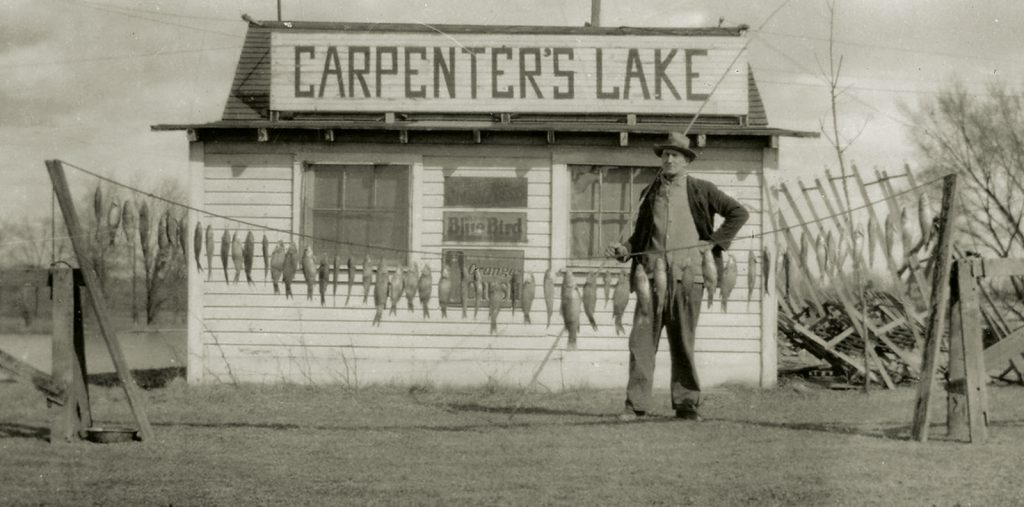When Wayne had a lake
 Did you know that Wayne used to have a man-made lake for recreation? The land bordered by Michigan, Hannan, Glenwood and Hix was all the Irving Carpenter farm. He had bought the land in 1904 from the Nash family and grew the farm to include a Sugar Bush, where maple syrup was made. After WWI Irving decided that he wanted a swimming hole on his property. At the time there were no county or state parks yet, and no good places near Wayne to swim, fish, or camp.
Did you know that Wayne used to have a man-made lake for recreation? The land bordered by Michigan, Hannan, Glenwood and Hix was all the Irving Carpenter farm. He had bought the land in 1904 from the Nash family and grew the farm to include a Sugar Bush, where maple syrup was made. After WWI Irving decided that he wanted a swimming hole on his property. At the time there were no county or state parks yet, and no good places near Wayne to swim, fish, or camp.
He hired a man named Otto Brown who owned a road grader to pull up a dike alongside the Rouge River, creating a bowl in the natural floodplain. A windmill was built which pumped water from the Rouge into the bowl, creating a large shallow lake, which was filled by 1924. At first tents could be rented to camp, but eventually Irving built several cottages out of salvaged wood that could be rented for the week or whole summer. There was also a bathhouse, kitchen, general store and playground equipment for kids. Wayne residents could swim, fish, canoe, camp, and in the winter they could ice skate on the frozen lake.

Carpenter’s Lake
Carpenter’s Lake became a regional destination, attracting picnics, meetings, reunions, speeches, and all manner of events. Everything was going swimmingly until 1937 when there was an outbreak of Polio in Detroit. This caused many swimming areas to be closed, including Carpenter’s Lake. Irving was asked to drain the lake, and he did so. The cabins were still used as summertime rentals, and Irving farmed the fertile former lakebed until 1957. The buildings fell into disrepair until the current owner of the property saw their value and restored the cottages and store building. If you drive down Hannan and look on the east side, you may catch a glimpse of the little white cottages, all the remains of Carpenter’s Lake. These are private property though, so please do not stop.
Another interesting story about Carpenter’s Lake is that from 1935-38 it was home to Camp Wayne, a Civilian Conservation Corps Camp. These camps were created around the US during the depression to put men to work doing landscaping and construction work. Camp Wayne was set up to re-grade and landscape the center median of Michigan Avenue from Holmes Road to Telegraph Road. One hundred eighty-four men lived at the camp and worked throughout the year, sending most of their earnings home to family. By 1938 the work was done so the camp was disassembled and moved to the next project.




